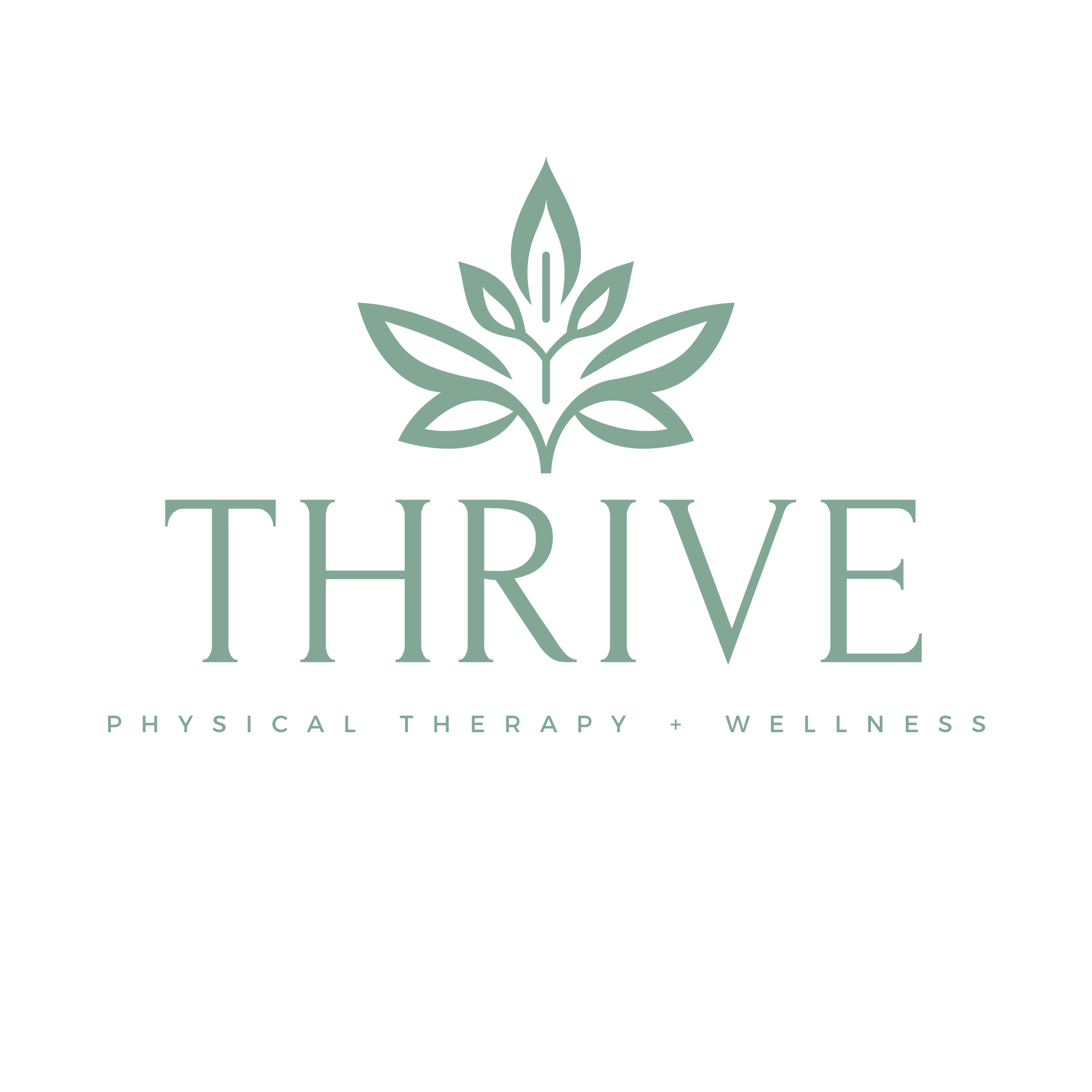
Arthritis is a word many of us have heard, maybe even tossed around in casual conversation. But for those who live with it, arthritis is more than a diagnosis—it’s a persistent, frustrating presence that can affect everything from morning routines to bedtime rituals. The stiffness in your knees that won’t go away, the ache in your fingers that makes opening a jar a challenge, or the persistent soreness that keeps you from enjoying your evening walk—all of these are part of a daily struggle. And naturally, the burning question is: how long does it take to feel relief once you begin therapy?
The answer isn’t as straightforward as you might hope, but that’s actually a good thing. Because real, lasting relief isn’t about quick fixes—it’s about personalized care, consistent action, and understanding how your unique body responds to movement and rehabilitation. At Thrive Physical Therapy, that journey is one of empowerment, not just pain management.
Understanding the Nature of Arthritis Pain
First, let’s talk about the enemy here. Arthritis isn’t one single condition. It’s actually a term that encompasses over 100 types of joint-related disorders, including osteoarthritis (OA), rheumatoid arthritis (RA), psoriatic arthritis, and more. While their causes differ—wear and tear in OA, autoimmune activity in RA—the end result is often joint inflammation, stiffness, reduced mobility, and chronic pain.
What makes arthritis especially complex is how it affects individuals differently. For some, it’s a dull ache in one joint. For others, it’s widespread stiffness that impacts daily function. And that means therapy isn’t one-size-fits-all either.
When patients ask how long it takes to feel relief, the answer starts with understanding their specific condition, history, goals, and lifestyle. It’s not just about reducing symptoms; it’s about enhancing life quality.
The First Steps with Therapy: Setting Expectations
When you first walk into a physical therapy clinic like Thrive, you’re not just signing up for exercises. You’re stepping into a guided partnership. And that begins with assessment—a deep dive into your pain points, joint health, movement capabilities, and even your daily habits. Thrive Physical Therapy doesn’t treat a condition; they treat you.
Typically, most patients begin to feel some level of relief within a few weeks of consistent therapy. But here’s where it’s important to be realistic: this early relief often comes in subtle shifts. You might notice you’re getting out of bed a little easier. That your shoulder doesn’t bark back as much after lifting groceries. These aren’t dramatic TV-style recoveries. They’re real, steady improvements.
Many patients report noticeable changes between the second and fourth week of therapy. It may not be complete freedom from pain, but it’s the beginning of regaining control over your body.
Why Consistency Is Everything
Therapy is like watering a plant. You don’t see it grow overnight, but give it time, sunlight, and care—and slowly, it begins to flourish. The same goes for managing arthritis pain. Thrive Physical Therapy emphasizes consistency, and with good reason. Joint pain and inflammation respond best to regular, guided movement, not sporadic bursts of effort.
You might come in twice a week for in-clinic sessions, and be given daily movement routines to follow at home. These exercises aren’t arbitrary. They’re designed specifically to reduce joint stiffness, improve strength in supporting muscles, and reintroduce better movement patterns.
For osteoarthritis in the knees, for instance, therapy might focus on strengthening the quadriceps and gluteal muscles, correcting gait, and improving joint alignment. With rheumatoid arthritis, the focus might shift slightly depending on inflammation levels and flare-ups. But the principle remains: with routine, the body begins to relearn function and reduce pain.
Listening to Your Body: A Personal Timeline
Relief from arthritis pain doesn’t arrive on a preset timeline. It depends heavily on a few key personal factors. First is the type and severity of arthritis. Someone with mild osteoarthritis may feel relief in a few short weeks, while someone with advanced rheumatoid arthritis may take months to experience consistent progress.
Age also plays a role—not because older adults can’t heal, but because joint wear, muscle loss, and balance concerns require a more careful and gradual approach. Similarly, lifestyle factors such as diet, stress, sleep, and activity levels influence recovery. An active individual who’s motivated to follow home exercises may respond more quickly than someone who’s inconsistent or battling multiple health issues.
But that’s the beauty of what Thrive Physical Therapy offers. They adjust and adapt based on you. Your goals, your pace, your setbacks—they’re all part of the plan. And when therapy is personalized, you’re more likely to not only feel relief, but keep it long term.
The Emotional Side of Relief
Let’s not ignore the emotional landscape here. Living with arthritis often comes with emotional weight—frustration, sadness, even fear. You might wonder if you’ll ever return to gardening, dancing, or playing with your grandkids without grimacing. Physical therapy offers relief beyond the physical.
Movement breeds confidence. Being able to bend, lift, stretch, or balance more effectively brings back joy. Thrive’s approach emphasizes encouragement, education, and small wins. As patients begin to notice their daily pain lessening, there’s a psychological uplift. That emotional relief can often arrive sooner than the complete physical transformation—and it’s just as important.
You may not realize how tightly pain grips your emotions until it starts to loosen.
Plateaus, Setbacks, and Real Progress
Now, a quick note about the middle of the journey—those weeks where progress feels stuck. Almost every patient hits a plateau at some point. Maybe your pain doesn’t decrease one week. Or maybe an old ache flares up unexpectedly. This doesn’t mean therapy isn’t working. It means your body is adapting.
Plateaus are often where therapists at Thrive make key changes. They might modify your program, introduce manual therapy, or incorporate new techniques like dry needling or ultrasound therapy. The goal is always the same: keep moving forward, even when it doesn’t feel like it.
And sometimes, real progress isn’t even about pain. It might be the return of range of motion in your neck. Or standing longer without sitting. Or finally sleeping through the night without waking from hip discomfort. These are victories—and they stack up.
Long-Term Relief and Maintenance
Here’s the truth no one likes to hear but everyone deserves to know: arthritis is typically a chronic condition. That doesn’t mean pain is permanent—but it does mean relief requires maintenance. That’s where Thrive shines. They don’t just walk with you through the early phases of recovery—they help you build a long-term lifestyle of joint health.
Once significant relief is achieved, the focus often shifts to a maintenance program. This could be a once-weekly session, check-ins every month, or a self-managed plan you follow at home. These programs aim to prevent flare-ups, preserve joint mobility, and keep muscles strong.
Patients who maintain their therapy routines—even when pain is no longer acute—often report the longest-lasting relief. Because arthritis may not disappear, but your pain doesn’t have to define your life.

A Therapy Experience Rooted in You
Too often, therapy is thought of as a temporary fix. But at Thrive Physical Therapy, the philosophy is different. Therapy is an invitation to take ownership of your health. It’s about breaking the cycle of pain, stiffness, and inactivity that arthritis often brings—and replacing it with motion, strength, and freedom.
Thrive doesn’t offer generic plans. They meet patients where they are. Whether you’re just beginning to deal with arthritis, have lived with it for decades, or are recovering from joint replacement, they tailor every session to fit your journey.
They also believe in partnership. You’re not a case file—you’re a person with goals, limitations, hopes, and fears. That relationship, that commitment to individualized care, is what sets Thrive apart. It’s also what helps their patients feel relief not just sooner, but more deeply and more lastingly.
Suggested Reading: Arthritis Management: Why Physical Therapy Should Be Part of Your Plan
Conclusion: The Real Answer to Relief
So how long does it take to feel relief from arthritis pain with therapy? For some, it’s a matter of a few weeks. For others, it’s months of consistent effort. But almost always, there’s some positive shift early on—a sign that your body is responding, a glimmer that things can improve.
The real answer, though, is this: relief comes faster, deeper, and more sustainably when you have the right team behind you. When therapy is rooted in expertise and compassion, when progress is tracked and celebrated, when you feel supported in every step—that’s when arthritis pain begins to loosen its grip.
If you’re looking for that kind of care, one that’s focused not just on treating symptoms but improving your life from the ground up, you’ll find it at Thrive Physical Therapy. Their dedication to personalized treatment, patient education, and ongoing support means you’re not just chasing relief—you’re building a life beyond pain.

